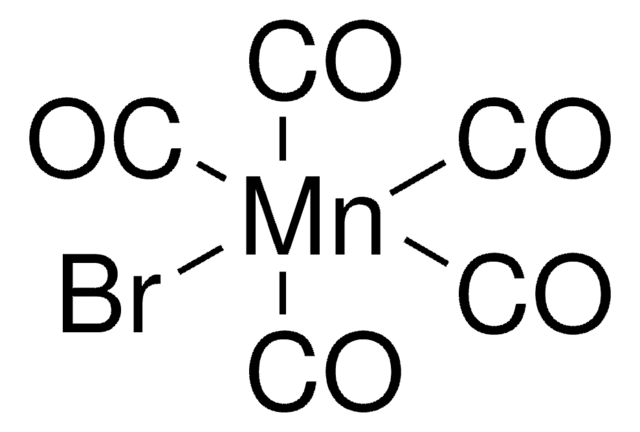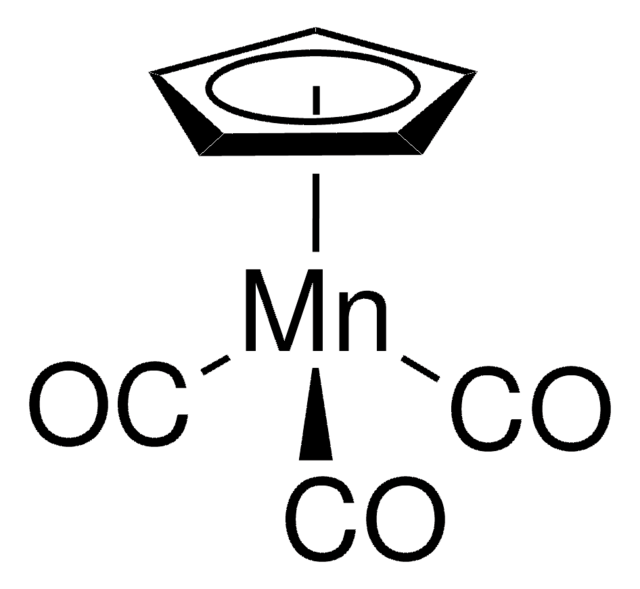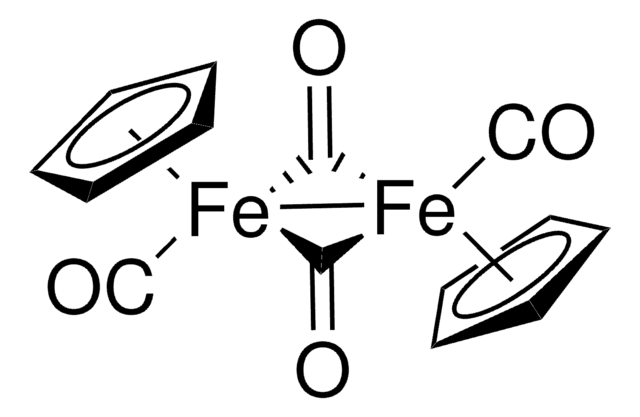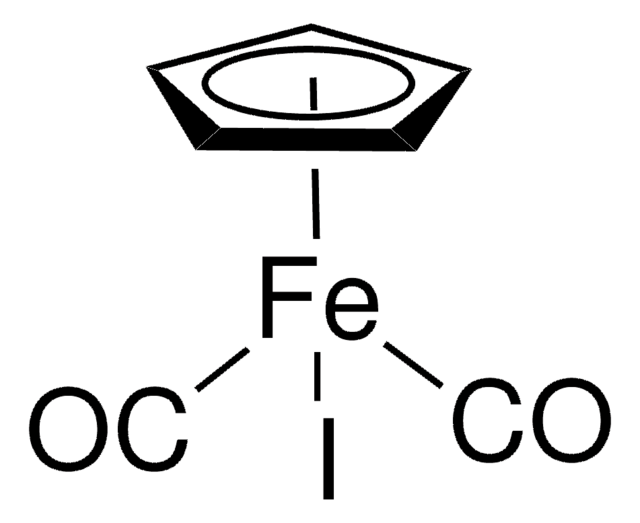317632
(Methylcyclopentadienyl)manganese(I) tricarbonyl
Synonym(s):
(Methylcyclopentadienyl)tricarbonylmanganese, MCMT, Tricarbonyl(2-methylcyclopentadienyl)manganese, Ethyl MMT, MMT, NSC 22316
About This Item
Recommended Products
vapor density
>1 (vs air)
vapor pressure
0.05 mmHg ( 20 °C)
form
liquid
reaction suitability
core: manganese
reagent type: catalyst
refractive index
n20/D 1.584 (lit.)
bp
232-233 °C (lit.)
mp
−1 °C (lit.)
density
1.38 g/mL at 25 °C (lit.)
SMILES string
[Mn].[C-]#[O+].[C-]#[O+].[C-]#[O+].C[C]1[CH][CH][CH][CH]1
InChI
1S/C6H7.3CO.Mn/c1-6-4-2-3-5-6;3*1-2;/h2-5H,1H3;;;;
InChI key
LYHJNAIHGFWRKM-UHFFFAOYSA-N
Related Categories
General description
Application
It can also be used as a reactant for:
- Aldol addition reactions.
- Preparation of homo- and heteronuclear mixed biscarbene complexes with conjugated bithiophene units.
- Molecular fragmentation using shaped femtosecond laser pulses.
- Preparation of MnAs thin films grown on GaAs(001) by metalorganic vapour phase epitaxy (MOVPE).
Signal Word
Danger
Hazard Statements
Precautionary Statements
Hazard Classifications
Acute Tox. 1 Inhalation - Acute Tox. 2 Dermal - Acute Tox. 3 Oral - Aquatic Acute 1 - Aquatic Chronic 1 - Skin Irrit. 2 - STOT RE 1 Inhalation
Target Organs
Lungs
Storage Class Code
6.1A - Combustible acute toxic Cat. 1 and 2 / very toxic hazardous materials
WGK
WGK 3
Flash Point(F)
204.8 °F - closed cup
Flash Point(C)
96 °C - closed cup
Personal Protective Equipment
Certificates of Analysis (COA)
Search for Certificates of Analysis (COA) by entering the products Lot/Batch Number. Lot and Batch Numbers can be found on a product’s label following the words ‘Lot’ or ‘Batch’.
Already Own This Product?
Find documentation for the products that you have recently purchased in the Document Library.
Customers Also Viewed
Our team of scientists has experience in all areas of research including Life Science, Material Science, Chemical Synthesis, Chromatography, Analytical and many others.
Contact Technical Service













